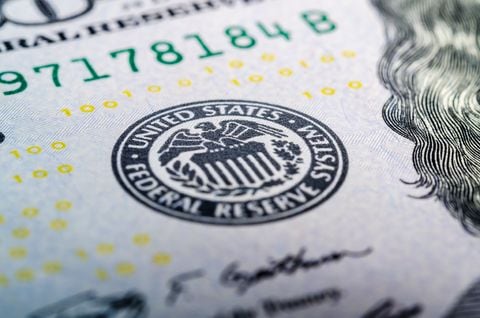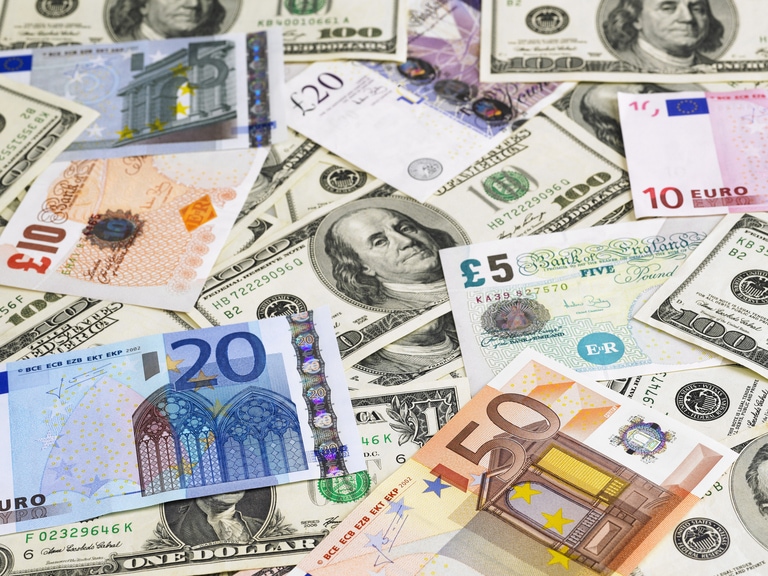It’s been a disjointed session for European markets today. We’ve seen a modest drift higher largely due to the recovery of US markets off their intraday lows from yesterday, which has helped add some support for prices.
Europe
The FTSE100 has been helped by a resilient oil and gas sector, with a rebound in oil prices helping to underpin the broader index, led by BP and Shell. On the downside we’re seeing a drag from a whole host of companies going ex-dividend including Abrdn, M&G, Aviva and HSBC.
It’s been a rollercoaster ride for the AO World share price over the last two years. Back in 2021 the shares rose to a record high of 443p, as a pandemic buying frenzy pushed the shares up from lows of 48.5p in the space of 9 months. It’s taken a little bit longer to round-trip that journey, with the shares hitting record lows of 38.7p earlier this month, however we have seen a bit of a rebound today. Today’s full year numbers have seen the company post a full year loss before tax of £37m, down from a £20m profit a year ago.
Revenues also fell by 6% to £1.56bn from last year, with both the UK and German business seeing declines. Comparisons to pre-pandemic turnover and the picture looks brighter with revenues showing a decent increase, however the problem has been a sharp rise in costs which has seen net debt rise to £33m. In July, the company raised £40m to bolster the balance sheet, while the decision was also taken to close the business in Germany, which it is estimated will cost £5m.
With respect to the outlook for 2023, AO says Q1 has been trading in line with expectations and that on a full year basis annual revenues are expected to be between £1bn and £1.25bn. This seems quite conservative, even with the loss of the German business. UK revenue last year was £1.37bn, so management are really low-balling expectations in anticipation that the rising cost of living is likely to prompt a slowdown in these sorts of big-ticket items.
After yesterday’s 60% decline Cineworld shares have seen a modest rebound, however this needs to be set in the context of the fact it is now very much a penny share, having dropped to a new record low of 7.8p in yesterday’s rout.
US
US markets opened slightly lower today after weekly jobless claims slowed to 250k last week, and the latest Philadelphia Fed business survey saw a modest rebound in August. Existing home sales fell for the 6th month in a row in July, by -5.9% in a sign that while the US consumer is showing some resilience the appetite for moving house just isn’t there.
Manchester Unitedremains in the news on continued chatter about the likelihood that the current owners might be willing to sell a minority stake in the business. The latest name in the frame is Sir Jim Ratcliffe of Ineos, who has said in the past he would be interested, although it would probably need to be for more than a minority stake. Ratcliffe doesn’t strike me as the silent partner type.
When Cisco Systems reported a surprise earnings downgrade back in May the shares fell sharply. The company cited the effect of Chinese lockdowns and other supply chain disruptions as they slashed the Q4 revenue outlook to between -1% to -5.5%, from 5.7%.
As it turns out this proved to be way too pessimistic as Q4 revenue came in at $13.1bn, which was flat year over year, and profits of $0.83c a share. On a full year basis revenue rose by 3% to $51.6bn. The supply chain disruptions which the company cited in Q3 didn’t prove to be as challenging as originally thought. For the new fiscal year Cisco said it sees Q1 revenue growth of between 2% and 4%, above expectations, while profits are forecast to come in at $0.83c a share.
Bed, Bath & Beyond shares have slipped back on reports that activist investor Ryan Cohen is looking to sell down his stake in the business, as he looks to take advantage of the recent big move higher.
FX
The Norwegian Krone initially surged higher after the Norges Bank raised rates by 50bps today to their highest level in 10 years, while saying that they expected to have to do more and could be raised further at the next meeting in September.
The strong move higher proved short-lived, as the US dollar reasserted itself, with the greenback making another new intraday high for August, pushing the pound below the 1.2000 area, and making a new low for August for the UK currency.
Last night’s Fed minutes appear to have divided opinion as to whether the Fed was being hawkish or dovish.
Whatever your point of view, and with Jackson Hole next week, the outlook for rates needs to be measured against the reality of whether you think it's credible that the Federal Reserve will start cutting rates next year.
The US central bank has expended a great deal of capital in raising rates quite aggressively in the past few months, and while we can expect to see further rate increases heading into year end, it’s unlikely that we’ll suddenly see rates coming back down again quickly in 2023, if inflation is still well above the Fed’s target rate of 2%, which seems likely.
From a purely practical point of view headline inflation is likely to settle at a much higher level than has been the norm over the past few years, and that’s a mindset that markets appear to be struggling to adapt to. Maybe that’s a mindset that a lot of today’s traders need time to adapt to given that they’ve spent most of the last 15 years conditioned to a low-rate environment.
Commodities
Brent crude oil prices have rebounded from 6-month lows, after yesterday’s sharp decline in weekly inventories. Fears of tighter supply once Russian oil embargoes start to kick in are also fuelling today’s rebound, although the outside prospect of Iranian oil returning to the market is tempering some of those gains.
Gold prices have stabilised slightly after registering three successive daily declines, finding a level of support at the $1,760 area. The resilience of the US dollar isn’t helping prices at the moment, although today’s retreat in yields has helped pull it off its intraday lows.
Volatility
EOS proved to be the standout in terms of price action amongst cryptos on Wednesday after the token ended up riding something of a wave off the back of optimism over the near-term outlook. The broader asset class found support anyway, but gains in EOS were rather more pronounced as investors bought into an imminent hard fork, although the 20% uptick ultimately proved unsustainable. Daily vol however pushed out to 153% against 80% on the month.
In commodities, grain prices are active once again. Following last week’s upbeat USDA report, we have seen more on this theme in recent days from other big growing nations and that appears to be helping drag down oats prices once again. After their blip higher last week, the underlying is falling once again, and the test may well be whether a break below levels seen at the start of the month can result. Daily vol came in at 157% against 121% on the month.
As for fiat currencies it was the Kiwi Dollar which topped the board in the wake of the Reserve Bank of New Zealand’s 50 basis point rate hike and hints that two more similar moves would be seen before the year is out. That resulted in quite a pronounced decline for the Aussie dollar against the Kiwi although the cross was quick to rebound from those one-month lows. Daily vol printed 8.79% against a one month reading of 7.03%.
Finally, amongst CMC’s proprietary share baskets, Cannabis was again the standout, briefly testing close to three-month highs yesterday before staging something of a reversion. There’s still an expectation of further legislation being passed in the US at both a state and federal level so as long as this is sustained then price support is likely to follow. Daily vol printed 140% against 117% on the month.






